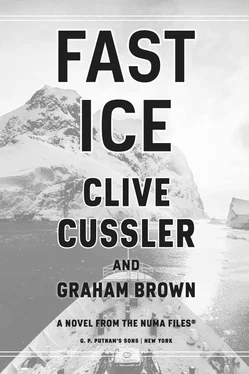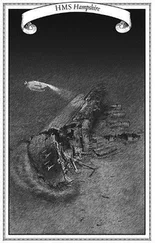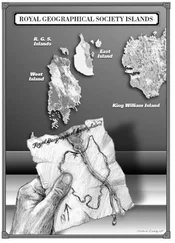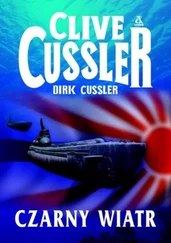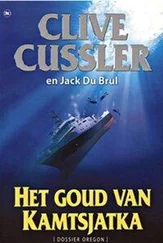“The impossible task,” Perlmutter said. “Fast Ice was a long-shot Nazi project. Much like the atomic bomb, or the cannon designed to shell London from the shores of France. Only, in scale it was much more audacious.”
“More audacious than the atomic bomb?” Kurt asked.
“In terms of feasibility, yes,” Perlmutter said.
Rudi interrupted. “We all love a good story, St. Julien, but this time we should probably cut to the chase. Tell them what you found.”
“Of course,” Perlmutter said. “Fast Ice was a desperate attempt to save the Third Reich from fighting a two-front war. It was initiated by the high command, probably by Admiral Doenitz or even by Hitler himself. The timeline is a little unclear, but it was given the green light sometime in 1942.”
“After the invasion of Russia bogged down,” Paul noted.
“Precisely,” St. Julien replied. “As you know, Hitler launched his invasion of Russia in the summer of 1941. His armies had reached the gates of Moscow by that winter, at which point a stalemate set in. The Nazis weren’t winning and the Russians were bleeding them dry.
“Hoping to keep the Soviets in the war, the Allies began sending convoys filled with supplies to Russia. But the only feasible route was through the Arctic Sea, traveling up over the top of Norway and east to the Russian ports. The convoys made for Archangel in the summer and were forced to take the more dangerous route to Murmansk in the winter.”
“Why Murmansk?” Joe asked.
“It was the only Russian port not frozen solid during the winter months,” Perlmutter explained.
“Ah,” Joe said. “Makes sense.”
“The Nazis had some early success in attacking these convoys,” Perlmutter continued. “Particularly the disaster of convoy PQ-17. That convoy was lightly defended and, fearing a mass attack, the ships scattered. U-boats and German aircraft sank twenty-four of the thirty-five vessels. That only prodded the Allies into providing stronger escorts for the convoys, deploying the type of naval power the Nazis could not hope to match.”
Perlmutter cleared his throat and continued. “Knowing that adequate supplies would allow Russia to continue fighting and killing Germans, Hitler and Doenitz grew desperate. They came up with a different plan. If they couldn’t stop the Allies’ ships from sailing, perhaps he could stop them from entering the ports and unloading their cargo.”
This was Rudi’s cue. After a nod from St. Julien, he tapped the keyboard in front of him, bringing up a map of the Arctic Sea and the Russian coastline. “As St. Julien mentioned, Archangel and Murmansk were the only Russian ports the Allies could reach. With Archangel ice-locked in the winter months, Hitler knew that shutting down Murmansk would starve the Russians of food, fuel and ammunition, forcing them to sue for peace. The Fast Ice project was born from this thinking.”
Perlmutter took back the conversation. “The idea, as bold as it was, depended on the use of freighters, oceangoing tugs and submarines equipped with battering rams to push, pull and otherwise maneuver icebergs into choke points in the narrow channel leading to the harbor. If this could be accomplished, Hitler reasoned, the icebergs would create an impenetrable barrier through which the convoys could not pass.”
“Couldn’t the Russians just use icebreakers to clear the way?” Paul asked.
“Icebreakers ride up on relatively thin sections of sea ice,” Perlmutter explained. “Breaking the ice by crushing it down with their great weight. Such ships are useless against a million-ton iceberg.”
“As are submarines and tugboats,” Kurt pointed out.
Perlmutter laughed. “Quite right,” he said. “It was a ridiculous notion. Though, I must point out, moving the ice would not have been impossible. The Germans had already identified favorable ocean currents and winds they could use to their advantage. Indeed, part of the plan entailed men going aboard and rigging giant sails across the top of the bergs to take advantage of these winds. By the Germans’ estimate, a speed of three knots could be attained and kept up throughout most of the process.”
“Faster than Washington traffic at rush hour,” Joe noted. “What the heck was supposed to happen when these icebergs reached port?”
“They were never actually supposed to reach the port,” Perlmutter said. “The facilities at Murmansk are twenty miles upriver from the sea. The icebergs needed only to reach the channels leading in from the ocean. Once lodged there, they would become immovable.”
Rudi clarified. “The idea was to run the icebergs up the channel, timing the entry with the incoming tide. They would hope to run aground precisely at the high-water mark. When the tide went out, their great weight would drive the underside of the iceberg down into the sediment. At that point, there would be no force on Earth that could move them.”
“Yes,” Perlmutter said. “In addition, the Nazis hoped that the outer sections of the icebergs would collapse once their massive weight was no longer supported by the seawater. The idea being that once the tide went out, and buoyancy was lost, large sections of the iceberg would fracture along existing lines of stress. In one or two cycles, these fractures would give way. The unsupported parts of the iceberg breaking off and crashing into the area around them. The rest of the channel would be sealed, preventing inbound ships from skirting the edges of the obstruction. As an added bonus, they expected this to cause massive flooding due to both the calving effect of the iceberg and the backing up and diversion of river water caused by the frozen plug in the heart of the river.”
“Before you tell yourself this couldn’t happen,” Rudi said, “recall that Alaska, North Dakota and Minnesota have all experienced massive flooding caused by ice-jammed rivers. This would be far worse.”
“Flooding from a collapsing iceberg would be no picnic either,” Joe said. “I’ve seen a few glaciers calve up close. The waves are second only to those of a tsunami.”
Rudi noticed Kurt nodding almost imperceptibly.
“I can see why this idea would be attractive to the Nazis,” Kurt said. “But towing an iceberg is a monumental task. Even with a dozen submarines and as many tugs to do the job.”
“Quite right,” Perlmutter said. “It would also be incredibly dangerous. Even if the ships avoided structural damage from the ice, they would be vulnerable to attacks from the Russian aircraft and vessels when they neared their objective.”
“Did this ever get beyond the planning stage?”
Perlmutter shook his head. “A few minor tests were carried out. Some by our U-boat captain with a flair for profanity, others by the tugboat fleet. It was decided that more power would be needed. When they drew up a plan to modify the battleship Tirpitz for the job, Hitler vetoed that idea because the Bismarck had recently been sunk and he didn’t want to lose any more capital ships. That put it back to the submarines and it pretty much just sat there.”
“Why call the plan Fast Ice?” Gamay asked. “Sounds like the process is pretty slow to me.”
Rudi answered this one. “Fast ice is the version that is secured—and made fast to—the shoreline. Its properties are similar in nature to free-floating sea ice, except that it grows thicker and sticks around longer because the land it’s attached to is colder than the seawater. That’s why you can walk on the ice near shore in the early winter even when the middle of a lake is still liquid.”
St. Julien jumped back in to finish things up. “Part of the German plan, vague as it was, intended that the presence of the icebergs would chill the stagnant water that remained behind in the harbor. This chilling effect would cause everything to freeze solid well into the spring.”
Читать дальше
